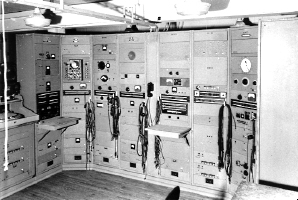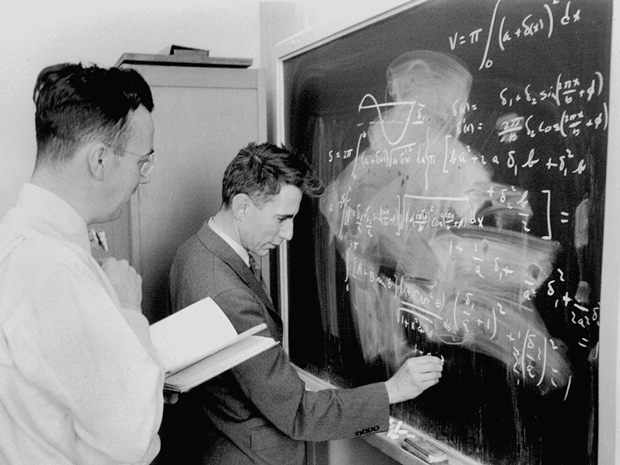"The fundamental problem of communication is that of reproducing at one point either exactly or approximately a message selected at another point."
- Claude Shannon

"One half of a SIGSALY terminal showning the recieving end." Crypto Museum. No date.
Shannon, quiet and focused, discovered groundbreaking algorithms in cryptography and other information communication. In 1941, Bell Telephone Laboratories hired Shannon, a year after earning his PhD. He worked on the SIGSALY cryptographic system, allowing Roosevelt and Churchill to communicate during World War II. Shannon mathematically proved that it was nearly impossible for third parties to decrypt their system.
Shannon’s highly classified work, unpublished until 1949, included the Shannon cipher encryption algorithm and other algorithms that used common letter patterns to recreate English words, similar to modern artificial intelligence algorithms.

"Employed by Bell Labs during World War II, Claude Shannon [at chalkboard] still found time to work on his own research." IEEE Spectrum. No date.
"Schematic diagram of a general communication system." Bell Labs. No date.
At Bell Labs, Shannon published “A Mathematical Theory of Communication.” The paper’s algorithm, the Shannon-Weaver communication model, described all the factors necessary to communicate. Weaver primarily advertised it, contributing little to Shannon's development of the model.
Instead of promoting his work, Shannon would rather juggle while riding a unicycle through the halls of Bell Labs. However, his algorithms innovated communications in WWII, cryptography and future computers.